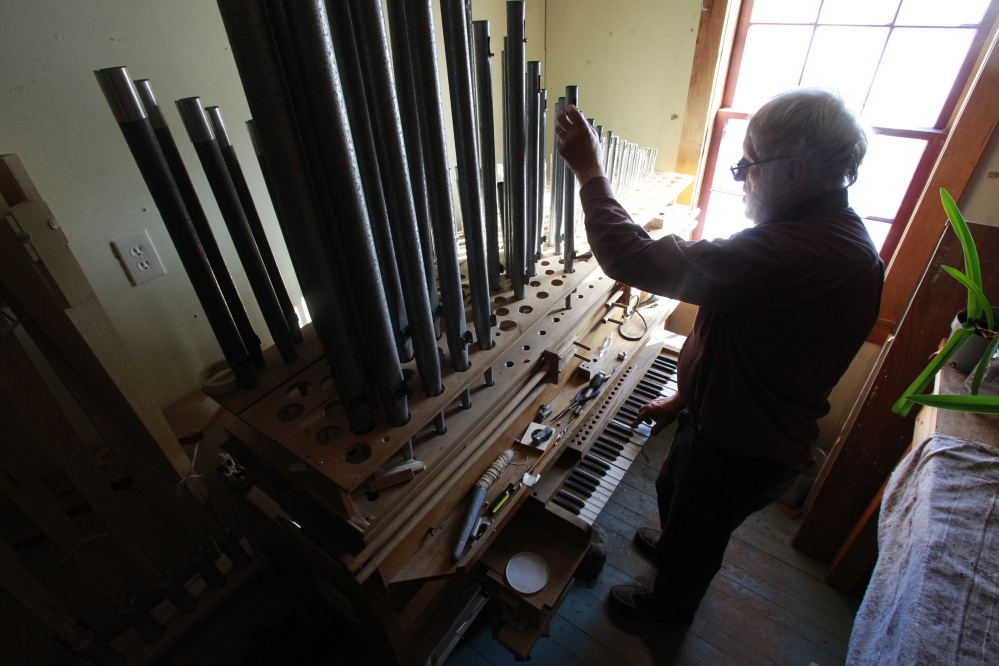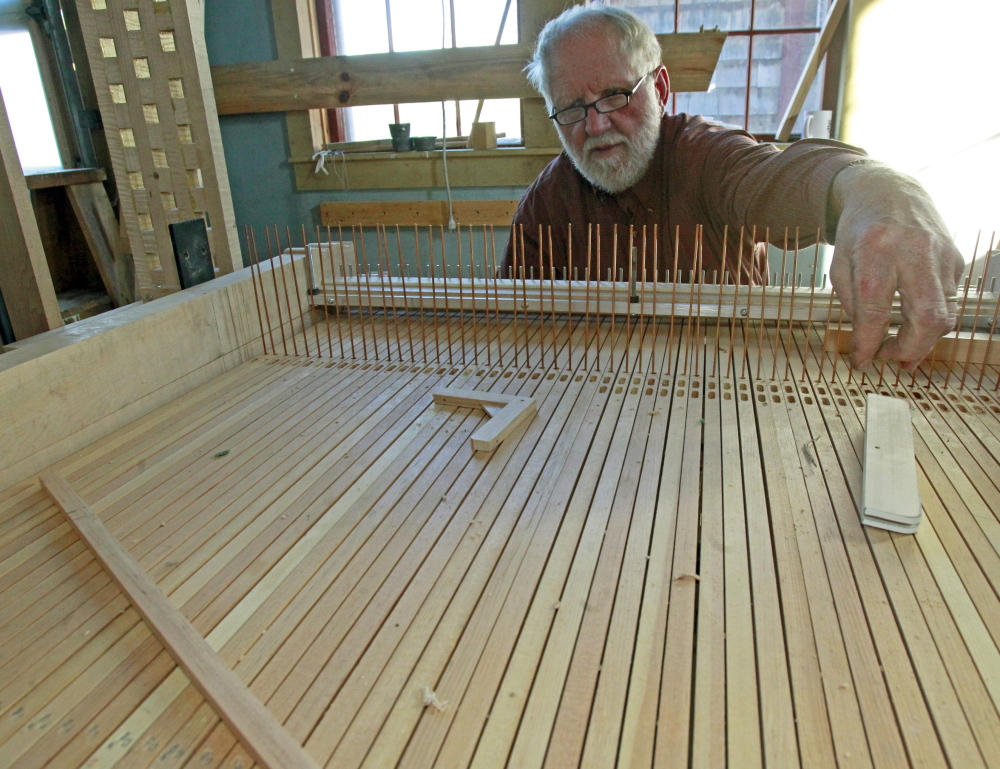POMFRET, Vt. — Part metal worker, part carpenter, part maker of fine furniture, part musician, A. David Moore works in a converted Vermont barn to build and rebuild pipe organs.
He and his team of six employees are members of a tiny fraternity of a few hundred people nationally who supply the massive instruments to churches, concert halls and, in some cases, homes of the wealthy; or who renovate historic organs that have fallen into disrepair.
Organs that Moore has built or worked on in his 40-year career are located in such places as Boston’s Old North Church, site of the lanterns that told of British troop movements at the start of the American Revolution; Grace Episcopal Church in Washington and a private home in San Francisco.
In recent weeks, Moore, 67, has been building an organ that will have new keyboards – or manuals, as organists call them – as well as stops, frame and casing – everything but the pipes.
Tubes as long as 16 feet that date from the 1860s and will end up leafed in the traditional gold have been shipped to Moore’s workshop from a closed Roman Catholic church in the Charlestown section of Boston. The organ is being constructed – for a price Moore estimates will end up in the high hundreds of thousands – for a Catholic church in Pensacola, Fla.
A piano player as a boy, Moore was a teenager in the early 1960s when a high school music teacher encouraged him to play the organ. He and friend John Atwood, who still works with Moore today, were given an old organ by the Masonic lodge in nearby Woodstock.
“It wasn’t working and they didn’t want it,” Moore said. “We brought it home on a farm truck and set it up in a barn.”
They got it fixed up, and soon organ music was blending with the sounds of cows lowing. Today that organ, built in Boston in the 1850s, is still in use at the Zion Lutheran Church in Iowa City. The church’s website says it’s the oldest organ in Iowa.
Days after offering a tour of his workshop to a reporter and photographer, Moore sent an email saying he had come across a 1900 Hook and Hastings organ in Littleton, N.H.
“The church is being sold and we are getting the organ for rebuilding and will find a new home for it,” Moore wrote. “Often these organs can be 15 feet wide and 12 feet deep or more, and it is difficult to find a big enough space for them. In this one, everything is all original, and it could easily go in a museum, but better to have it in a church and be used all the time.”
The organ bound for Pensacola’s St. Paul Church was a 10-foot-high skeleton in Moore’s workshop on a recent Monday, with the first of three keyboards attached at one end. The frame was built from maple cut from the wood lot on the Moore family farm. Moore had to plug some of the holes left from when the trees were tapped decades ago for maple syrup.
Moore builds his organs in a 19th-century style and frequently uses parts from organs of that era that are beyond repair themselves. He said he prefers to avoid most of the electronic technology introduced into many organs in the 20th century – the one exception being in the blower that provides the air that produces the sound. In earlier days, teenage boys were brought in to operate bellows, he said.
But Moore is not completely averse to using modern technology in historic renovations, if that’s what’s on order. In a two-year, $300,000 project to renovate the 1834 organ at the First Religious Society in Newburyport, Mass., Moore installed computerized devices that allow more stops – meaning more tones, more sound – to be produced by a single player.
Brian Jones, retired music director at Boston’s famed Trinity Church, was brought in to play the rededication concert in September of 2012.
“I think the organ is a big success,” Jones said. “I think David should be very proud of it, and I told him so.”
Send questions/comments to the editors.




Success. Please wait for the page to reload. If the page does not reload within 5 seconds, please refresh the page.
Enter your email and password to access comments.
Hi, to comment on stories you must . This profile is in addition to your subscription and website login.
Already have a commenting profile? .
Invalid username/password.
Please check your email to confirm and complete your registration.
Only subscribers are eligible to post comments. Please subscribe or login first for digital access. Here’s why.
Use the form below to reset your password. When you've submitted your account email, we will send an email with a reset code.